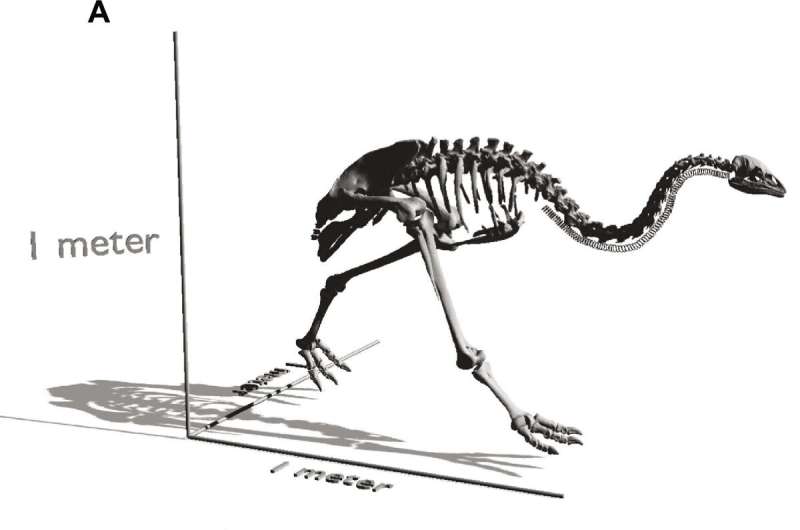Researchers reconstruct genome of extinct species of flightless bird that once roamed the islands of New Zealand

A team of evolutionary biologists at Harvard University, working with colleagues from the Max Planck Institute for Biological Intelligence, East Carolina University, Osaka University and the University of Toronto, has reconstructed the genome of an extinct species of flightless bird that has come to be known as the little bush moa.
In their study, published in the journal Science Advances, the group sequenced DNA recovered from a fossilized bone found on South Island (the largest and southernmost of the two main islands that make up New Zealand).
The little bush moa was once one of the biggest birds in the world—about the size of a modern turkey, they went extinct shortly after the arrival of human settlers in New Zealand. Prior to that, they roamed the forested islands of New Zealand for millions of years. They were unique due to a complete lack of wings. Prior partial sequencing has shown that they had the genes needed to grow wings, but over time, they had mutated as the birds slowly became flightless land dwellers.
The fossil used by the research team came from a bird that was one of what are believed to be nine species of extinct Anomalopteryx didiformis. The team describes their results as the recovery of a complete mitochondrial genome of a male moa nuclear genome—a feat that was deemed challenging.
After sequencing, the researchers discovered that the birds had been able to see in the ultraviolet spectrum—an ability that would have helped them capture hiding prey. They also had what the group describes as a sensitivity to bitter foods—a trait common in modern birds. The data also showed that the likely population of the birds had once been as high as 240,000 and that the birds diverged from their closest relatives approximately 70 million years ago.
The research team suggests that in addition to providing new information on the little bush moa, their results should also function as a new resource for other teams working to better understand avian evolution.
More information: Scott V. Edwards et al, A nuclear genome assembly of an extinct flightless bird, the little bush moa, Science Advances (2024). DOI: 10.1126/sciadv.adj6823
Journal information: Science Advances
© 2024 Science X NetworkAncient DNA from an extinct native duck reveals how far birds flew to make New Zealand home
No comments:
Post a Comment